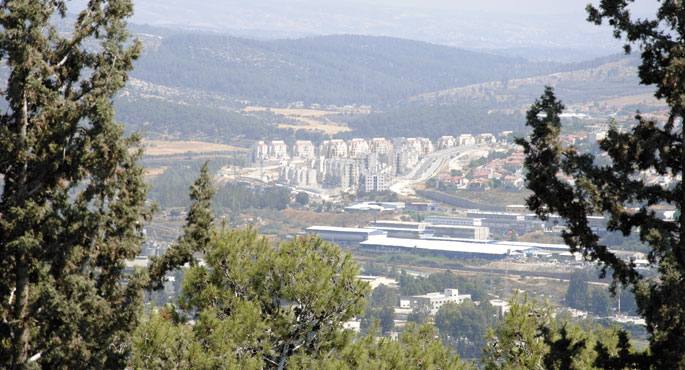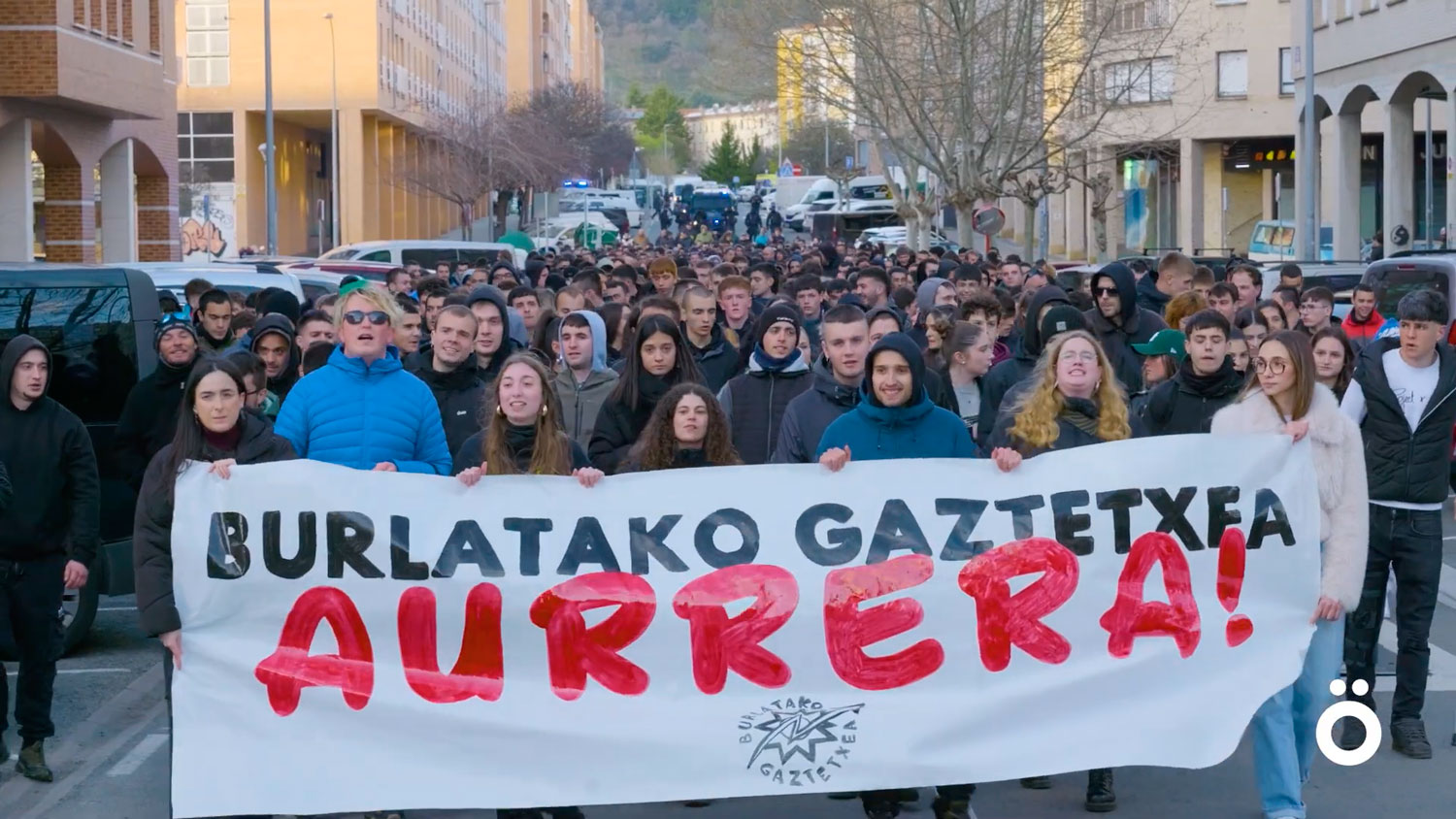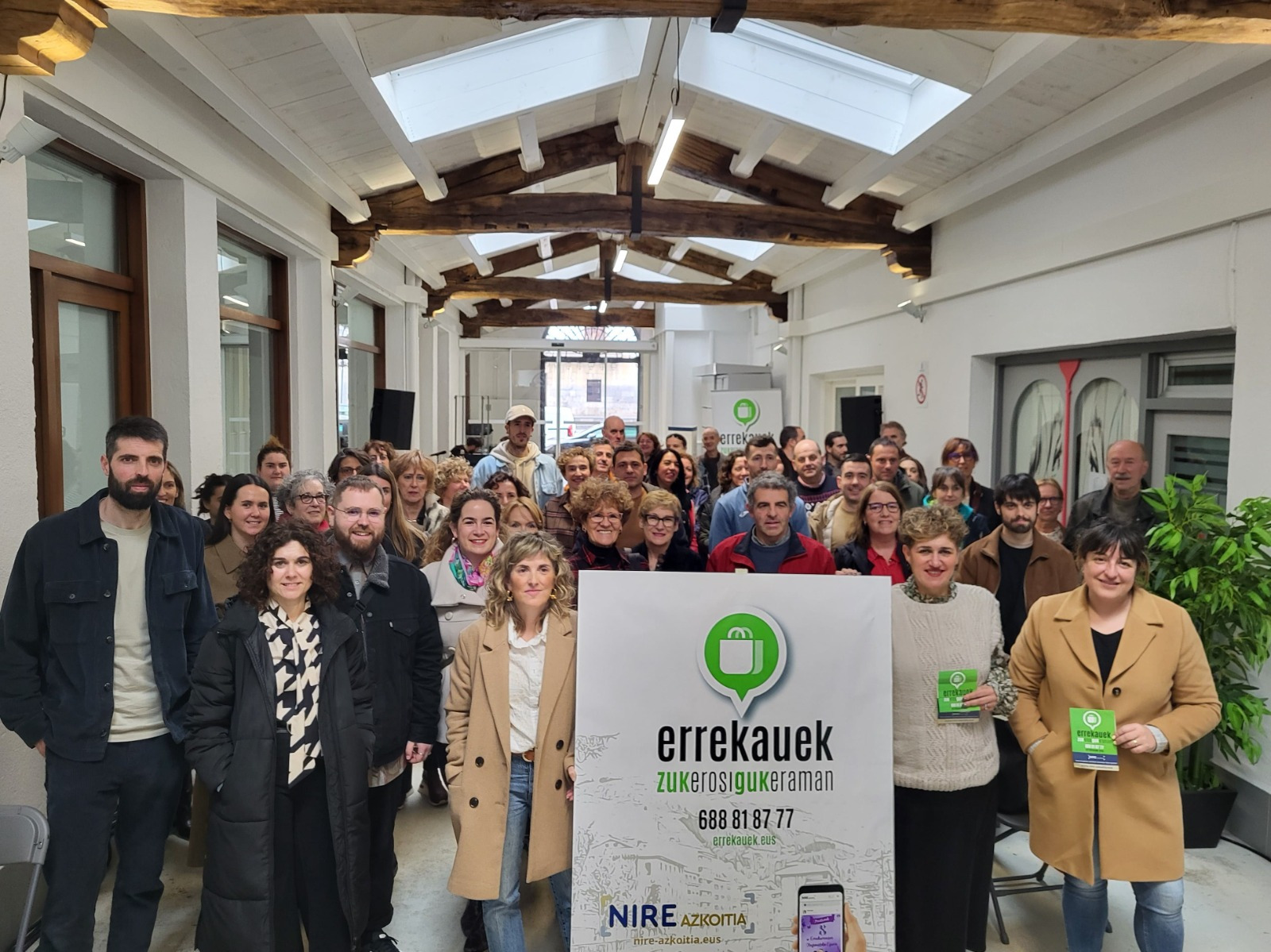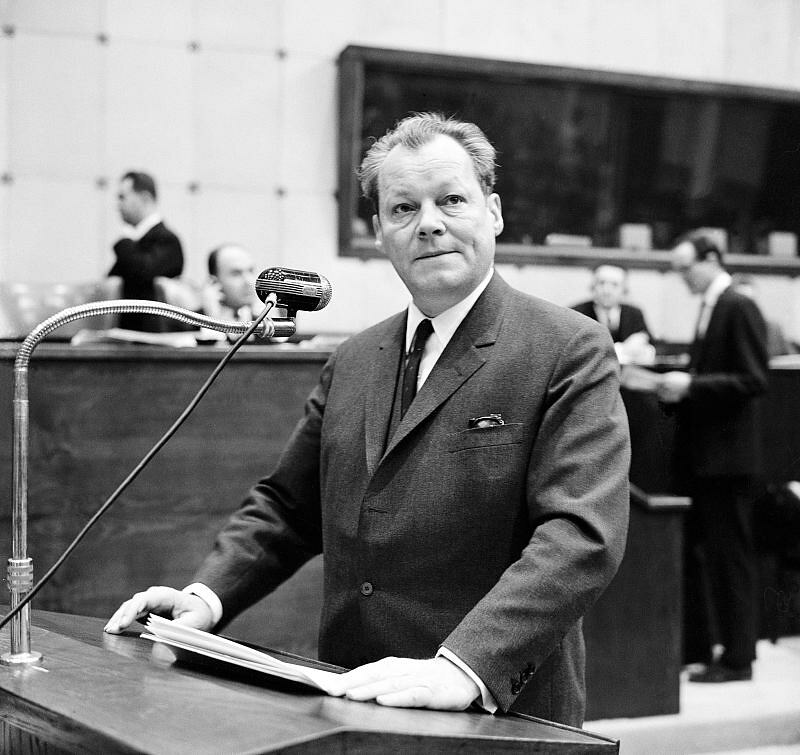Colonization and equality
- Kibutz is one of the most well-known communal movements in history. Symbol of the socialist dream, an almost sacred symbol of Israel has long been the cradle of the military, intellectual and political elite. Today, there are processes of privatization and decadence.

In the kibutz Tzora, near Jerusalem, Ella Bargai proudly depicts the painting with which the first stone was placed in 1948. Um Yusef holds in his hands the key to the house he lost in the same year in the area of the Deishe fugitives of Bethlehem. The two women claim the same place. The first, a tribe that has lived in the last 63 years; the second, destroyed Dayr Aban, its hometown.
This is not the only example. If we look at the evolution of the Israel-Palestine case, the development of the Kibutz movement and the problem of Palestinian refugees often appear as causal consequences, especially after the 1948 war. In fact, the kibutz was a fundamental tool for facilitating the creation of the State of Israel. Since the establishment of the first society by emigrants from Russia in 1909, Degania Alef, the movement has focused on the occupation of historic Palestine. It was not the first, nor the largest, nor the first wave of immigrants that took place. Kibutznik never exceeded 4% of the population, but they launched a pioneering project in Palestine to establish a socialist homeland for the Jews. They considered Zionism and socialism to be an inseparable partner. There is no contradiction, in the opinion of the first members: “After the diaspora of the 2000s, we asserted the right to build a state for the Jews, and through the tribes we were convinced that this project could also be socialist,” said Tzora founder Uri Bargai.
Equality within, colonization abroad
“XX. The Kibutznika were the settlers of the early century, but the claim of the State of Israel of 1948 offered them a legality that the current settlers have not acquired.” This is how Alberto Pradilla explains the nature of the kibutz movement in the book The Wrong Jew. In fact, part of the Ashkenyan Jewish elites – of Central European and Eastern origin – created isolated collective associations based on agriculture, preventing the existence of the Palestinians living in them. “Equality does, but among them. For us they were like any other Zionist seeking land occupation and expulsion from us,” said Mohammad Al-Afandi and Um Yusef, Palestinian refugee husbands.
Contrary to the confusing interpretations of Western culture, the Kibutz do not preach the pacifist character of the movement. Moreover, they claim their prominence in the colonization of historic Palestine. Although most communities were established before 1948, the Kibutz became an important settlement to reclaim the territory during the First Arab-Israeli War. “They placed us in strategic places, especially on the slopes of the mountains. The goal was to control the area and start cultivating the land that remained empty,” said Yair Tzaban, recalling the time when the Tzora Constitution was established at 18 years of age. “You don’t own a land until you settle on it and start sowing the plots,” added Ella Bargai.
Both were soldiers of the Jewish militia Palmaj during the war. “Palmaja could not develop without the kibutz, nor the kibutz without the members of Palmaja,” Tzaban said. Indeed, the young Jewish soldiers who had just completed their studies used kibus to self-finance Jewish militias: “Each month, Palmaja’s members worked for two weeks in the kibutz and for another two weeks they trained for war,” he explains. As the war progressed, some of its members were freed from militias to establish stable kibutz in the remains of Palestinian villages destroyed by Jewish troops.
“In the lands of Dayr Aban, for example, they built the villages of Cibutza Tzora, Marchseya, Beyt Shemesh and Yish’i. Its inhabitants, on the other hand, moved to Hebron or Bethlehem,” says historian Walid Khalidi, who is well researched on the subject. The same examples can be found if we look at the history of the 600 Arab villages destroyed in 1948. Israeli historian Ilan Pappé goes further and accuses Israel of “ethnic cleansing” and “expulsion” against the Palestinians.
“Green cleaning”
Akram Salhabe, who works for the rights of refugees in Palestine, believes that in analyzing the Kibutz movement there is a process that cannot be overlooked and that defines with the words “green cleanliness”: “With the creation of the State of Israel, the Jewish National Fund was made with half of the 600 Palestinian villages destroyed during the war and has since planted 240 million trees, most of them.” This demonstrates the desire that Zionism had to start from scratch, in the words of Salhabe: “The physical transformation of the landscape not only destroyed the native flora, but concealed the history until then. The planting of forests became an effective way to reclaim the territory and establish a new culture for the newborn state”.
The Kibutz movement had a direct responsibility in the process of planting pines, as the Ashkenazian elites tried from the outset to shape the European landscape “to the promised land”. Yair Tzaban has proudly described the forest he planted in 1959 with other peers around the kibutz and defined us as “today, a beautiful natural park.” The sisters Um Yusef and Haseba Um Mohamad, on the other hand, remember with sadness the last time they visited Dayr Aban in the 1980s: “They surrounded the town of pines and among the rubble there could hardly be the traces and olive trees of our houses.”
So Salhabe sees the symbolism of the conflict: “Olive trees and pines play a fundamental role in building the Palestinian and Israeli national narrative. The Jewish tree is the pine tree and the symbol of the Palestinians is the olive tree. Both are totally different, both culturally and from the point of view of agriculture.”
Modern agricultural model
Kibuzas were formed from the beginning as a community agricultural association. The objectives were to ensure collective social organization, assembly operation and equality among all its members, in accordance with the socialist and Zionist ideology. “We were idealistic young people, because we believed we had to be able to build a Jewish state, to self-manage the land.” That is what Ella Bargai explained. Uri, husband, was Tzora's first secretary general: “Not exploding, not exploiting, that was our motto.”
Following the doctrine of socialism, the Kibutznik established a new agricultural model that sought to dismantle the previous “feudal model” and modernize the techniques. “Replacing traditional production, we pioneered the implementation of new methods to increase land productivity,” says Tzaban on the contributions of the Kibutz movement.
For Salhabe, however, this romantic point of view hides the colonial character of the caves: “Zionism is a modern model of colonialism, and land is no more than a tool for profit in that project. In the model in which economic interest prevailed, the slogan became ‘we can do better than the indigenous people’. Saloac has been convinced that this system broke the balance of the inhabitants of the area with natural resources. Um Yusef also agrees: “The link of the Palestinians with the earth is deeper than economic exploitation, because our culture is based on the relationship with the Motherland. Dabke dance, for example, is a tribute to the rhythms of nature.”
Managing contradictions
The Kibutz were Israel’s most beloved children, especially during the time when the Mapai party was in power. They helped build the spirit of the people who emerged on the remnants of war and became the cradle of the military, political and intellectual elite. In the 1970s, however, it began to decline, especially when the hegemony of the Labour party ended. The new generations moved to cities, after cutting state aid, to put an end to dependence. The kibutz was hit hard, and most of them embraced capitalism and privatization. In the opinion of Yair Tzaban, the contradictions began to appear in the movement: “The Jews came from the Arab countries and we started hiring the Arabs of Israel, and according to our ideology, we became exploiters.” Segregation became evident in the Kibutz, and it became clear that Zionism was stronger than socialism.
So many people think that the greatest contradiction lies in the essence of the movement itself: How do we marry occupation and equality? “For a long time, the left tended to mystify Kibutz, because he believed he was defending an exceptional socialist project to protect Israel,” Salhabe explained. The Kibutz gave a progressive prestige to Zionism and, as a result, many justified the socialist dream at all costs, without admitting that the islands had been expressly formed by the Jews.
Pasa den asteko "kaleratze ilegala" salatu dute hainbat herritarrek, ostiral arratsaldean.
Manifestazio jendetsu batek herriko kaleak zeharkatu ditu, Poliziaren gehiegizko dispositibo batek zainduta, gazteek kudeatutako guneen defentsan eta Gaztetxeak erasoen aurrean defendatzeko. Manifestazioaren amaieran, publiko egin dute iragarpena.
Iruña-Veleia auzia “behin betiko” argitzea eskatu dute martxoaren 30ean, Gasteizen egindako manifestazioan. Iruña-Veleia argitu, ez suntsitu plataformak aztarnategian egindako “txikizioak” salatu ditu eta Arabako Foru Aldundiaren ardura... [+]
Etxebizitza eskuratzeko orduan pertsona arrazializatuek eta migratzaileek jasaten duten bazterketa sistematikoa salatu dute Gasteizen, agerraldi baten bidez. Apirilaren 5ean Donostiara bertaratzera deitu dute, etxebizitza-eskubide unibertsalaren alde.
Usurbil herri zaintzaileagoa izateko lankidetzan ari diren herrikide, eragile eta erakundeen talde argazkia duzue albiste honi atxikitakoa. Larunbatean Sutegin egindako "Usurbil, herri zaintzailea" izeneko ekitaldian atera genuen. Norabide horretan herri hau egiten ari... [+]
Historia errepikatzen dela idatzi zuen Marxek, “lehenik tragedia gisa, gero fartsa moduan”. Armagintzaren eta militarismoaren inguruan errepikapen hutsa ez, espiralean goraka doan buklea ari gara bizitzen, fartsatik asko duena, eta tragedian amaitzeko gero eta aukera... [+]
Astelehen honetan hasita, astebetez, Jon Miranderen obra izango dute aztergai: besteren artean, Mirande nor zen argitzeaz eta errepasatzeaz gain, bere figurarekin zer egin hausnartuko dute, polemikoak baitira bere hainbat adierazpen eta testu.
Udaberrian orain dela egun gutxi sartu gara eta intxaurrondoa dut maisu. Lasai sentitzen dut, konfiantzaz, bere prozesuan, ziklo berria hasten. Plan eta ohitura berriak hartu ditut apirilean, sasoitu naiz, bizitzan proiektu berriei heltzeko konfiantzaz, indarrez, sormen eta... [+]
Itsasoan badira landareen itxura izan arren animalia harrapari diren izaki eder batzuk: anemonak. Kantauri itsasoan hainbat anemona espezie ditugun arren, bada bat, guztien artean bereziki erraz atzemateko aukera eskaintzen diguna: itsas-tomatea.
Ohe beroan edo hotzean egiten da hobeto lo? Nik zalantzarik ez daukat: hotzean. Landare jaioberriek bero punttu bat nahiago dute, ordea. Udaberriko ekinozio garai hau aproposa da udako eta udazkeneko mokadu goxoak emango dizkiguten landareen haziak ereiteko.
Duela lau urte abiatu zuten Azpeitian Enkarguk proiektua, Udalaren, Urkome Landa Garapen Elkartearen eta Azpeitiako eta Gipuzkoako merkatari txikien elkarteen artean. “Orain proiektua bigarren fasera eraman dugu, eta Azkoitian sortu dugu antzeko egitasmoa, bere izenarekin:... [+]
Azken aldian, asteburuetan, Internet ez dabil ondo. Hasieran, zaila zen webguneei ezarritako blokeoen zergatia ulertzea; orain, badakigu Espainiako La Ligak agindu zituela, futbola modu ilegalean emititzea saihesteko. La Ligaren blokeoak euskal domeinuei eragiten dien... [+]
















.jpg)





